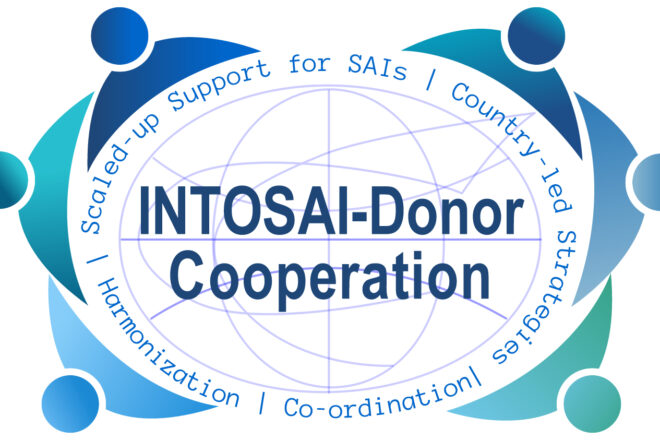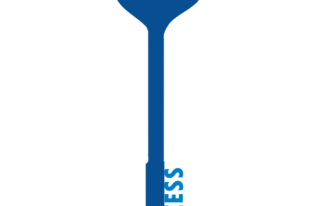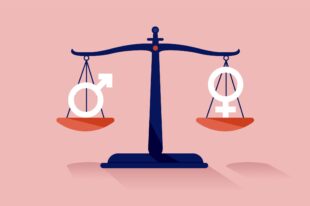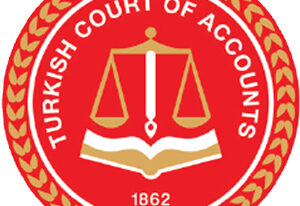World Bank, PEFA, DFID on SAI Contributions

In this update, the INTOSAI Donor Cooperation provides contributions from the World Bank, Public Expenditure and Financial Accountability (PEFA) Secretariat and the Department for International Development (DFID) on recent developments from the donor community related to the area of public financial management (PFM). The topics include Sustainable Development Goals (SDGs), PEFA assessments and anti-corruption. From different angles, these articles discuss how SAIs can contribute and what it can mean for their future priorities.
Role of Supreme Audit Institutions in the Post-2015 Development Agenda
The UN General Assembly’s 2014 resolution recognizes that the SAI role is important to the achievement of national development objectives, as well as internationally agreed upon development goals.
by Rajat Narula, Lead Financial Management Specialist in the World Bank
Since the UN resolution of 2015, the 17 Sustainable Development Goals (SDGs) with their 169 targets have become the driving force of the development agenda. In the words of World Bank Group President, Jim Yong Kim, “The SDGs focus on people, planet, prosperity, peace and partnership provides a comprehensive and robust development path for the world to follow over the next 15 years.”
The investment needs to meet the SDG objectives are tremendous: infrastructure alone could require up to $1.5 trillion a year in emerging and developing countries. Mobilizing and effectively using resources is absolutely the key, and accountability and good governance are critical to the effective use of resources.
Against this background, the role of supreme audit institutions (SAIs) in advancing accountable and effective governance and in enhancing the impact of service delivery is more important than ever. The UN General Assembly’s 2014 resolution on “Promoting and fostering the efficiency, accountability, effectiveness and transparency of public administration by strengthening supreme audit institutions” recognizes that SAIs’ role is important to the achievement of national development objectives, as well as internationally agreed development goals.
SAIs can contribute to the effective implementation of the SDGs in a number of ways:
- They can support national efforts to build effective, accountable, and inclusive institutions.
- They can audit national systems, assessing progress in meeting national sustainable development goals.
- With performance audits, they can examine the economy, efficiency, and effectiveness of key government programs that contribute to specific aspects of the SDGs.
- They can be models of transparency and accountability in their own operations, including auditing and reporting.
- They can respond to financial integrity risks and to fraud and corruption.
- They can clearly and openly communicate audit findings to promote improvement, transparency and public accountability.
SAIs can contribute specifically and practically to the agenda, for example, by advocating advancements in public financial management systems through improved government accounting practices; auditing the capacity of national statistical and vital records systems to produce the data needed to ensure that no individual or social issue is “invisible”; and assessing the validity of national targets and performance measures, the availability of baseline performance data and the adequacy of the overall performance system.
SAI capacity is a major concern. PEFA and other diagnostics consistently reveal the need for strengthening this capacity. A global survey in 2014 showed that 67 percent of SAIs consider their capacity development needs to be of high or medium priority. INTOSAI and development partners need to rally and align their support to focus on building SAIs’ capacity.
It is encouraging to see INTOSAI’s strategic plan 2017-2022 gearing up to answer the question, “How can INTOSAI contribute to the 2030 Agenda for Sustainable Development, including governance, to strengthen the fight against corruption?” By incorporating this question into the strategic plan, INTOSAI has signaled to the world that SAIs are ready to be a part of the solution to humanity’s most pressing problems. The challenge, however, is to deliver on this promise.
PEFA and SAIs are Key Ingredients-Recipe for Better Public Financial Management
SAIs have an important role to play in combination with PEFA assessments. External audit is a significant component of the PEFA measurement framework.
by Lewis Hawke, Head of the PEFA Secretariat
The PEFA partners launched a major upgrade of the 15-year-old public financial management (PFM) performance assessment framework in Budapest, Hungary, in April. The event was attended by more than 260 people from around 70 countries who were interested to see and hear what has changed.
The PEFA framework has been expanded to include coverage of new topics, including fiscal strategy, public investment, public assets and non-financial performance. It has broadened coverage of revenue administration to include all revenue, not just tax. It has introduced a stronger emphasis on internal control and has refined many of the continuing indicators to better reflect good international practice and to achieve greater consistency with other diagnostic instruments like INTOSAI’s SAI PMF.
During the event in Budapest, the PEFA partners, comprising IMF, World Bank, European Union and governments of France, Norway, Switzerland and UK, explained why they decided to upgrade PEFA. Jennifer Thomson, World Bank Director of Operational Policy and Country Services, said that PEFA needed to keep pace with the lessons that have been learned from more than 10 years of experience. Rajesh Kishan, Governance Advisor in DFID’s Financial Accountability and Anti-Corruption team, noted that the upgraded PEFA was a robust framework that should help governments to improve their PFM systems.
PEFA has been used by 149 countries, and more than 500 PEFA reports have been produced over the last decade. So why has PEFA been so widely used? The main reasons relate to the broad coverage of key areas of PFM across fiscal strategy and budget planning, revenue administration and budget execution, accounting and reporting and external oversight. It provides graduated, quantitative scores for performance founded on internationally recognized good practices in each area. It provides a report card on the strengths and weaknesses of PFM systems for governments to use in prioritizing improvements. It has also been used to monitor reform progress using specific PEFA performance measures and through successive assessments. Some countries have used PEFA four times between 2008 and 2016, obtaining updates every few years on reform progress, and in some instances, regress during the period.
PEFA has been referred to as the “gold standard” for PFM diagnostics, but it needs to be treated with care. It does not assess the policies or the root causes underlying performance results. For those reasons, amongst others, the PEFA reports do not include recommendations for reform action. Governments and their internal and external stakeholders need to obtain additional information to determine how best to respond to the results of PEFA assessments. If PEFA scores are used simplistically as a recipe for reform, it could instead be a recipe for disappointment. PEFA reports need to be combined with knowledge of the reasons for scores, their implications for fiscal risks and results and the type of intervention that will lead to improvements in each case.
SAIs have an important role to play in combination with PEFA assessments. External audit is a significant component of the PEFA measurement framework, but SAIs can also provide information on performance in other areas of the PEFA, for example, through audit findings on procurement, cash management, revenue administration, internal controls, financial reporting and service delivery performance. SAIs also have an important role in the discussion of how to use PEFA findings to improve PFM performance. Their knowledge of PFM systems, risks and the consequences of weaknesses in those systems is an important ingredient in the recipe for effective and lasting reform.
For more information, visit www.pefa.org
Anti-Corruption Summit-Commitments and the Relation to SAI Work
SAIs are a key aspect of a well-functioning accountability ecosystem, and the independent scrutiny that effective SAIs provide also acts as a deterrent for corruption and fraud as well as helping with detection.
by Rajesh Kishan, Governance Adviser—Financial Accountability and Anti-Corruption Team, Department for International Development (UK)
In May 2016, the United Kingdom Government hosted an Anti-Corruption Summit in London which brought together world leaders and representatives from business and civil society to highlight that corruption is at the heart of so many of the world’s problems and to agree on a package of practical steps to expose, punish and drive out corruption, as well as support those who have suffered from it. The Summit was chaired by the Prime Minister of the United Kingdom and delivered a step change in global efforts to increase transparency and tackle corruption with significant commitments across a wide range of areas. It included the first ever Global Declaration against Corruption announcing leaders’ shared ambition to tackle corruption and a Summit Communique (link below) setting out a common approach to tackling corruption. This was agreed upon by all participating countries and international organizations. Statements were also made by individual countries to establish the concrete actions they will take in order to tackle corruption.
Fiscal transparency and budget oversight were both featured as important building blocks in exposing corruption in the Summit Communique, and, as part of this, it was also agreed to specifically highlight the important role that Supreme Audit Institutions (SAIs) can play. SAIs are a key aspect of a well-functioning accountability ecosystem and the independent scrutiny that effective SAIs provide also acts as a deterrent for corruption and fraud as well as helping with detection. Some SAIs are taking a more direct role in combating corruption, including publicizing areas of corruption risk and working closely with other anti-corruption institutions.
The latest Open Budget Survey (2015) revealed some concerning findings about the status of SAIs in many developing countries. It found that currently SAIs in far too many countries lack the independence, openness and level of resources required to effectively carry out their mandate. In almost a quarter of countries that participated in the survey, the heads of SAIs can be removed by the executive without the consent of the legislature or judiciary. The survey also found that in over a third of countries covered, audit reports on national budgets were either not published at all or published too late to be useful. And in over half of countries surveyed, reports are not published that track follow up actions on audit reports.
For these reasons, the Summit Communique makes a clear commitment for countries to “strengthen the capacity of SAIs” and “support the independence of SAIs and the publication of audit findings.” Whilst many countries are indeed doing these things already, the UK believes it is important to continue efforts to ensure that these minimum standards are met everywhere.
A range of other commitments were also made at the Summit, including the following:
- Six countries committing to public registers of beneficial ownership and six more with similar arrangements;
- A commitment by leading international professional services firms including effective systems, education and training, and fostering cultures that refuse to tolerate corruption;
- The creation of a new International Anti-Corruption Coordination Centre to help police and prosecutors work together to punish the perpetrators of corruption;
- New asset recovery legislation in 22 countries will help return proceeds of corruption;
- Specific support to those affected by corruption with stronger protection for whistleblowers;
- 17 countries are committed to institutional and professional partnerships including “twinning” of different countries’ tax inspectors; and
- A new Innovation hub bringing together 16 countries and business and civil society to share technological and other innovative techniques to tackle corruption.
Click here for the Summit Communique document.





